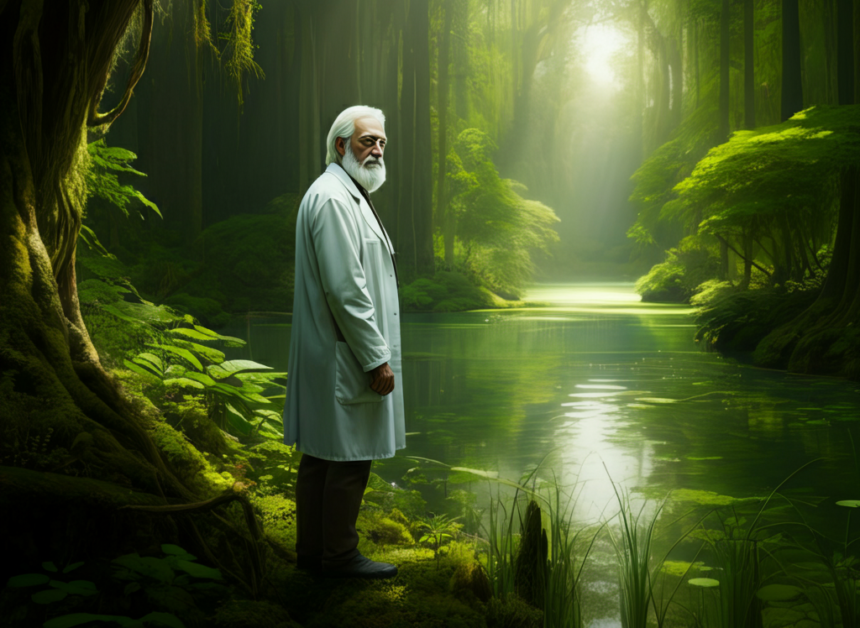Environmental science has had its fair share of trailblazers. Among them, Emericus Zlinszky stands out as a pioneer with the rare ability to push the boundaries of traditional research while remaining deeply connected to the environment he sought to study and protect. For those unfamiliar with his work, Zlinszky’s innovative methodologies and steadfast commitment to ecological studies have left a significant mark on his field.
Who was Emericus Zlinszky? What made his contributions so impactful? By the end of this blog, you’ll not only understand his visionary approach but also gain an appreciation for how his legacy continues to inspire researchers, scientists, and environmental enthusiasts around the globe.
A Portrait of a Scientist
Imagine combining rigorous scientific precision with deep environmental empathy. That’s exactly what set Emericus Zlinszky apart. A Hungarian environmental scientist and geographer by training, Zlinszky was best known for his groundbreaking work in aerial ecology. His research bridged the gap between technology and environmental science, making it easier to monitor and understand fragile ecosystems.
Zlinszky focused heavily on lake ecosystems and wetland conservation, demonstrating both precision and a visionary approach. From studying water bodies from above to interpreting data rooted in powerful technology, his work revealed patterns and behaviors that had previously gone unnoticed.
The Power of Aerial Ecology
At the heart of Zlinszky’s work was aerial ecology, a method that leverages aerial surveys, LiDAR (Light Detection and Ranging), and remote sensing technologies to study landscapes from above. By applying these tools to lake monitoring and wetland mapping, Zlinszky was able to gather comprehensive ecological data that traditional field methods often overlooked.
Here’s what makes aerial ecology so innovative:
- Bird’s-eye Perspective: Airborne measurements offer a much broader vantage point than ground techniques, revealing patterns and trends extending across large areas.
- Environmental Precision: Technologies like LiDAR made it possible to map changes in vegetation, water levels, and habitats with a level of detail that was previously unimaginable.
- Rapid Adaptability: Aerial methods allowed Zlinszky to respond quickly to crises like flooding or habitat degradation, providing timely and critical insights.
These methods aren’t just useful—they’ve fundamentally changed how we monitor and protect ecosystems.
A Case Study in Visionary Leadership
One of Zlinszky’s most notable contributions involved lake monitoring. He pioneered the use of LiDAR data to measure variations in macrophyte vegetation (aquatic plants that grow in or near water). Why does this matter? Macrophytes are crucial to the health of aquatic ecosystems—they stabilize sediment, contribute to oxygen production, and provide habitat for wildlife.
Zlinszky identified patterns of vegetation loss in these areas, raising red flags about the disruption of ecosystems due to changes in water quality and human activity. His ability to visualize these findings and bring them to the forefront of environmental discussions made a lasting impact.
Why Zlinszky’s Work Matters Today
Even though Zlinszky passed away in 2022, his work continues to influence modern environmental science in powerful ways. His research methods have opened doors for many successors to refine and expand upon his findings. But the bigger picture is clear—Zlinszky’s approach isn’t just about conservation; it’s also about inspiring innovation.
Environmental science faces unprecedented challenges today, from climate change to habitat destruction. By following Zlinszky’s trailblazing path, modern scientists are better equipped to tackle these issues. His work encourages us to think bigger and use all the tools at our disposal to uncover new knowledge about the planet we call home.
Lessons from Emericus Zlinszky
1. Blend Science with Technology
Zlinszky showed us how to take cutting-edge tools and turn them into something deeply practical for environmental science. Whether it’s the use of drones, LiDAR, or remote monitoring systems, the opportunities for innovation are endless.
2. Look Beyond Traditional Methods
Before aerial ecology became a widely discussed concept, Zlinszky saw its potential and brought it into the mainstream. His career is a remarkable reminder to think outside the box and explore less conventional paths.
3. Never Lose Sight of the Goal
Despite all the technology he embraced, Zlinszky never lost sight of his ultimate mission—to protect and restore ecosystems. It’s a message we can all take to heart, whether we work in science or not.
Voices from Experts in the Field
Emericus Zlinszky was more than a researcher; he was a mentor and inspiration for many in the environmental science community.
“Zlinszky’s work redefined how we view lake ecosystems,” says Dr. Natalia Green, an ecological researcher focused on water ecosystems. “Through aerial ecology, he brought a clarity to the unseen problems affecting aquatic habitats. His methods have transformed how we assess environmental degradation today.”
Another testament comes from Professor Robert Lang, a scientist specializing in remote sensing techniques. “Emericus Zlinszky wasn’t just a pioneer—he was a teacher. His work inspired a generation of ecologists to be agile, adaptable, and to use technology responsibly.”
How You Can Celebrate and Continue His Legacy
Feeling inspired by Zlinszky’s work? There’s so much we can all do to ensure a brighter future for our planet. Here are a few ways to get involved:
- Volunteer in conservation projects near you—wetland clean-ups, lake restoration efforts, or tree-planting initiatives.
- Educate Yourself about aerial ecology and stay informed about cutting-edge environmental science research.
- Support Environmental Science by donating to organizations that champion conservation and sustainable development.
If you’re an environmentally conscious professional with an interest in aerial or ecological studies, consider reading more of Emericus Zlinszky’s work and the science it inspired.
Emericus Zlinszky’s Legacy in Perspective
Emericus Zlinszky’s career may have spanned just a few decades, but his vision continues to influence how we monitor and preserve ecosystems. By bridging gaps between innovation and conservation, his legacy reminds us that science is more than data or experimentation—it’s a call to action for better stewardship of our planet.
We owe it to Zlinszky to keep his vision alive. Whether you’re a scientist, conservationist, or someone passionate about protecting the planet, remember his message—push forward, innovate fearlessly, and never lose sight of the environment’s value.
Meta Data
Meta title
Emericus Zlinszky’s Visionary Contributions to Environmental Science
Meta description
Discover how Emericus Zlinszky revolutionized environmental science through aerial ecology, lake monitoring, and innovations in conservation.
Conclusion
Emericus Zlinszky’s work serves as an enduring example of how science and innovation can be harnessed to protect the natural world. His passion for understanding ecosystems and dedication to technological advancement laid the groundwork for new approaches in environmental conservation. Zlinszky showed us that preserving our planet requires not just knowledge, but also a commitment to act, adapt, and inspire others. His legacy continues to challenge us to think creatively and act boldly in the face of global environmental challenges. By honoring his contributions and carrying his vision forward, we can strive toward a future where humanity and nature thrive together.
FAQs
Q: Who was Emericus Zlinszky?
A: Emericus Zlinszky was a pioneering figure in the field of environmental science, known for his groundbreaking work in aerial ecology, lake monitoring, and innovative conservation techniques. His research focused on using technology to study and protect natural ecosystems.
Q: What is aerial ecology?
A: Aerial ecology involves the use of aerial data collection methods, such as drones or satellite imagery, to study the structure and health of ecosystems from above. Zlinszky was a key innovator in applying these advanced tools to better understand the dynamics of environmental systems.
Q: Why is lake monitoring significant in environmental science?
A: Lake monitoring provides crucial insights into the health of freshwater systems, which are vital for biodiversity, human consumption, and overall environmental stability. Through his work, Zlinszky helped develop methods to track changes in lake ecosystems, ensuring early detection of environmental threats.
Q: What is Emericus Zlinszky’s lasting legacy?
A: Zlinszky’s contributions revolutionized the way we study and protect natural habitats. By merging technological advancements with ecological research, he inspired a new generation of scientists to think creatively about conservation. His legacy embodies the importance of innovation in the fight for a sustainable future.






